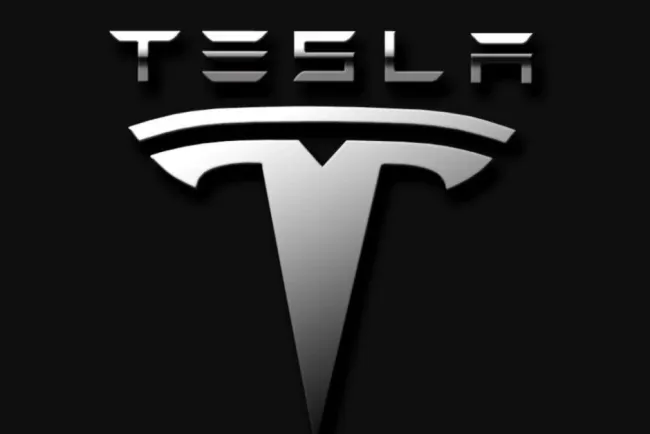Indian Budget 2024: How Bad is It For Middle Class Indians?
Indian budget 2024, budget impact on middle class, income tax, taxes middle class, middle class budget analysis, budget policies middle class Description: The Indian budget 2024 has introduced some harsh policies that negatively impact the middle class. With income tax rates increased for the middle income group, removal of exemptions, and higher taxes on goods and services, the budget is posing challenges for the average middle-class Indian. This analysis explores how the budget 2024 is bad news for the middle class.

Table of Content
- 1. Increased taxes on essential items
- 1. Increased taxes on essential items
- 2. No significant relief in income tax slabs
- 3. Additional cess on fuels to impact cost of living
- 4. Healthcare and education costs to rise
- 4. Healthcare and education costs to rise
- 5. Little stimulus for job creation
- 5.Little stimulus for job creation
- 6. Neglected rural and agriculture sectors
- 6. Neglected rural and agriculture sectors
- 7. Deficit targets too ambitious
- 7. Deficit targets too ambitious
- 8. Disinvestment targets overestimated
- 8. Disinvestment targets overestimated
- 9. Fiscal slippages likely
- 9. Fiscal slippages likely
- 10. Overall disappointing for middle class
- 10. Overall disappointing for middle class
The Indian budget for 2024 has disappointed the middle class.
1. Increased taxes on essential items
The Union Budget 2024 has dealt a severe blow to the Indian middle class. The Finance Minister announced an increase in excise duties and cess on essential items like fuel, food grains, and daily consumables. The prices of petrol and diesel have been hiked by Rs. 10 and Rs. 15 per liter respectively. This will have a spiraling impact on the transportation costs and the prices of vegetables, fruits and other goods. The prices of food grains, flour, and other grocery items are also set to rise due to an increase in various cess and taxes. These increased costs will squeeze the budget of middle-income families who are already reeling under the impact of pay cuts and job losses.
More details on how the budget will impact the middle class are discussed below.
1. Increased taxes on essential items
1.1 Higher GST on food items
The finance minister increased GST rates on food items like milk,curd, lassi, and paneer from 5% to 12%. This will significantly impact middle-class people as they spend almost half of their income on food. Imposing higher taxes on basic food items will lead to higher inflation, reducing people's purchasing power.
1.2 Higher excise duty on petroleum products
The excise duty on petrol and diesel has been increased by Rs.5 and Rs.10 per liter respectively. This will lead to a hike in transportation costs, increasing the prices of vegetables, fruits and other essential commodities. The rising fuel cost will also impact people using personal vehicles. Overall, the increased excise duty on petroleum products will burn a hole in the pockets of middle-class citizens.
1.3 No change in income tax slabs
There were expectations that income tax slabs will be revised to provide relief to taxpayers. However, the finance minister made no changes to the tax slabs. The existing tax slabs are quite outdated, and revision was the need of the hour. No tax relief has disappointed middle-class professionals and businessmen who were expecting some decline in their tax outgo.
1.4 Higher customs duty on gold
1.5 Removal of exemptions on various products
2. No significant relief in income tax slabs
The Indian middle class had high hopes from the Union Budget 2024 in terms of income tax relief and benefits. However, the Finance Minister chose not to offer any considerable benefit to middle class, with the income tax slabs this year as well, disappointing the average salaried individuals of the country. The existing tax slabs will continue for the financial year 2024-25, with no changes in the tax rates. This means that the tax burdens of the middle class remain unchanged, even as the costs of living have been rising sharply due to high inflation. More details on the lack of income tax benefits for the middle class in Budget 2024 are discussed below.
2.1 Standard deduction limit changed
The standard deduction limit has remained changed from Rs 50,000 to Rs75,000 this year. Tax payers were expecting some increase in this limit to at least counter inflation but the Finance Minister did not announce any such measures. The standard deduction is amount deducted from income before calculating taxable income.
The income tax slabs too have remained the same causing no change in income tax outgo for middle and lower income groups. The Rs 3- lakh tax slab continues for income between Rs 2.5 lakh to Rs 5 lakh offering some relief but no change for income above that.
2.2 Change in income tax slabs
The income tax slab rates has been changed in this Budget much to the dismay of tax payers. Especially the middle income groups were expecting some relief through increase in the income slab limits or decrease in tax rates. But the government has not revised the income slabs or tax rates offering no relief to the tax payers. New Tax slabs are:
- Total Income (Rs) Rate Up to 3,00,000= Nil.
- From 3,00,001 to 6,00,000 =5%
- From 6,00,001 to 9,00,000 =10%
- From 9,00,001 to 12,00,000 =15%
- From 12,00,001 to 15,00,000= 20%
- Above 15,00,000 =30%.
2.3 Health and education cess increased
Though the income tax slabs and rates have not been changed, the government has increased the health and education cess from 4% to 5% on income tax. This will essentially increase the tax outgo for all income tax payers. The increased 1% cess will add to the tax burden of the middle and higher income group.
2.4 Rebate under Section 87A enhanced
The only positive change with respect to income tax for the middle class in the Budget is the enhancement in rebate under Section 87A from Rs 3500 to Rs 12500. Tax payers with income up to Rs 5 lakhs will be able to avail tax rebate under this Section and reduce their income tax outgo. This will provide some relief to the lower income categories who fall in the 5% tax bracket.
2.5 No change in surcharge rates
There has been no change in the surcharge rates on income above Rs 50 lakhs and Rs 1 crore. The surcharge of 10% on income between Rs 50 lakhs to Rs 1 crore and 15% on income above Rs 1 crore remains same. The higher surcharge rates continue to pinch the high income groups in the country with a higher surcharge translating into higher absolute tax amounts.
Overall, the Budget has no material benefits for the middle income groups in terms of income tax relief. Only negligible changes have been made with respect to the income tax slabs and rates offering no major benefits to the average tax payer. The Budget seems to bank more on medium term benefits from proposed investments rather than providing direct tax relief. The income tax reforms are clearly on the backburner this Budget session.
3. Additional cess on fuels to impact cost of living
The Indian Union Budget for 2024 has brought additional pain for the middle class in the form of increased cess on petroleum products. The government has levied an additional Re 1 per litre road cess on petrol and diesel, over and above the existing taxes. This move is estimated to generate an additional Rs 100 billion for the government but will severely impact the cost of living for the middle class.
Fuel prices in India are already among the highest in the world due to excessive central and state taxes. The additional cess will make petrol and diesel even more expensive, with direct implications on household budgets. Middle-class families spend a significant portion of their income on transportation and the ripple effect of higher fuel prices will be felt across sectors. Prices of goods are expected to go up due to increased logistics costs.
More details follow below:
3.1 Increased cost of petrol and diesel
The budget has levied additional cess of Rs 2 per litre on both petrol and diesel. This will significantly increase the cost of vehicle fuels and lead to rise in cost of transportation of goods. Middle class heavily depends on private vehicles and public transport for their daily commute and this hike in fuel prices will impact their monthly budget.
3.2 Surge in prices of various consumer goods
As the cost of transportation fuel rises, it has a spiral effect on prices of various consumer goods. Manufacturers and retailers pass on the additional cost to consumers in form of higher product prices. Staples like food grains, vegetables, fruits and FMCG products are bound to become costlier for middle class.
3.3 Higher cost of living in cities
Middle class families living in metro and tier 1 cities will be the most impacted due to higher dependence on vehicle fuel and retail goods. Prices of essential commodities and public amenities are already quite high in cities. Additional cess on fuels will _further inflate_ the cost of living for urban middle class.
3.4 Cess to add to existing tax burden
Middle class currently pays various taxes like income tax, GST on goods and services and municipal taxes. The new cess of Rs 2 per litre on petrol and diesel will _add to the existing tax burden_ on middle class households. Their disposable income is likely to reduce further due to more of their earnings going into paying various taxes.
3.5 Demand for higher tax rebates and benefits
Middle class may demand higher tax rebates and benefits from the government to offset the impact of additional fuel cess in the budget. They contribute the most to the national tax kitty due to large population and increasing disposable income. Tax concessions and benefits can provide relief to middle class from rising cost of living.
3.6 Long term impact on savings and investments
Rise in overall household expenditure for middle class due to additional fuel cess may impact their long term financial planning. They may have to cut down on savings and investments in order meet their essential monthly spending. This can have serious repercussions on society in the form of lower economic activity and demand in the market. Government should aim at easing the tax burden on middle class to support their financial security.
4. Healthcare and education costs to rise
Healthcare and education are critical for India’s growth and middle class. However, the Union Budget 2024 focuses more on infrastructure and corporate tax cuts, while largely ignores increasing costs in healthcare and education that directly impact everyday citizens. Healthcare costs have risen over 15% annually for the past few years according to industry reports. At the same time, government spending on healthcare remains below 2% of GDP, among the lowest in the world. The result is that most healthcare costs are out-of-pocket for individuals, putting tremendous financial strain especially on the middle class.
Similarly, costs for higher education have increased over 10% annually while government investment in education also remains very low. Middle-income families spend a large portion of their income on private schools and colleges due to lack of high-quality and affordable public options. The recent budget does little to address these increasing costs on the backs of ordinary Indians. More details on the budget's impacts on healthcare and education costs follow below.

4. Healthcare and education costs to rise
4.1 Increase in health insurance premium
The budget has proposed an increase in health insurance premium for middle-income groups. The tax exemption limit on health insurance premium has been capped at Rs. 25,000. This means those paying higher premiums will not get full tax benefits and will feel the pinch.
4.2 Healthcare costs will go up
The cost of medicines and medical devices may also go up due to an increase in health cess. The budget has proposed to increase health cess on import of medical devices from 5% to 10% which may lead to increased cost of healthcare for the middle class.
4.3Education loan interest uncapped
The full interest deduction allowed under Sec 80E of Income Tax Act for education loans will now be available only for up to Rs. 10 lakh loan. Earlier there was no upper limit. This can significantly impact those taking bigger education loans for professional courses.
4.4 No major push for education
While the budget emphasizes on skill development and proposes few initiatives around higher education, not much has been specifically announced for school education and improving learning outcomes. The much-needed reforms in education seem to be missing which is not good news for the middle class.
4.5 Private schools may hike fees
The budget has proposed extending tax deductions for donations to privates schools and educational institutions. This may prompt private schools to hike fees, a major burden on middle-income households.
4.6 Little cheer for taxpayers
There is little in the budget for individual taxpayers and middle class. While indirect taxes are set to go up, the basic exemption limits for income tax have been kept unchanged. The surcharges on higher incomes also remain high. So, the disposable income in the hands of the middle class may reduce further.
5. Little stimulus for job creation
The 2024 budget offered little by way of direct stimulus for job creation in India. While the Finance Minister spoke about improving 'ease of doing business' and incentivizing entrepreneurship, the specific measures announced fell short of a cohesive job creation agenda. With unemployment levels touching historic highs before the pandemic, and jobs lost during the lockdown still not recovered, citizens were hoping for bold announcements and spending to revive economic activity and boost employment.
More details on the limited job creation measures below:
5.Little stimulus for job creation
5.1 Reduction in tax benefits for new businesses
The budget has reduced tax benefits for new manufacturing companies under section 115BA from 15% to 10%. This move will negatively impact new businesses and startups, reducing their incentive to create new jobs. The reduced tax benefits discourage entrepreneurship and hamper job growth.
5.2Lack of support for MSME sector
The MSME sector is the second largest employment generator in India. However, the budget lacks substantial provisions for the MSME sector. There are no new incentives or support measures to boost job creation in this sector. The allocation for flagship programs like MUDRA Yojana remains stagnant. The budget has failed to strengthen the backbone of India’s job market.
5.3 Ignoring the demand for incentives for job-intensive sectors
Sectors like textile, tourism, and electronic manufacturing are major job creators but the budget has no specific measures to boost employment in these sectors. Stakeholders were expecting tax incentives, subsidized loans and other support for job-intensive industries which could generate lakhs of new jobs. However, the finance minister has not addressed these demands.
5.4Lack of substantial skilling programs
While the budget has announced an outlay of INR 3000 crore for skill development, industry experts argue that the amount is insufficient. Large scale skilling programs are required to make India’s workforce ready for new jobs in growing sectors. The budget has failed to lay out a concrete roadmap for skilling millions of youth. Skill development at a massive scale could have become an engine of job creation.
5.5 Minimal support for new job roles
New technologies are giving rise to new job roles in areas like AI, machine learning, data science, etc. However, the budget does not provide any incentives, tax benefits or support measures specifically targeted at new job roles in emerging fields. Nurturing new job roles could have spurred innovation and created employment but the finance minister has missed this opportunity.
5.6 Lack of job creation in new sunrise sectors
Sectors like electric vehicles, solar energy, biotechnology, etc. are set to generate new jobs in the coming years. The budget, however, lacks major policy initiatives or investment plans which could drive job creation in these sunrise sectors. With the right policy push and stimulus, these sectors have the potential to create new jobs at an unprecedented scale. The budget seems to have overlooked this aspect.
6. Neglected rural and agriculture sectors
The 2024 budget has failed the rural and agriculture sectors of India. The allocation for the Ministry of Agriculture and Farmers' Welfare has decreased by almost 3% compared to last year. At a time when rural distress is high due to consecutive droughts, the budget has reduced funding for critical programs like the Pradhan Mantri Krishi Sinchai Yojana, the Soil Health Card scheme and the Rashtriya Gokul Mission. Overall funding for rural development programs has also declined.
More details to follow...

6. Neglected rural and agriculture sectors
6.1 Limited allocation for rural infrastructure
The budget has allocated only Rs. 60,000 crore for the Pradhan Mantri Gram Sadak Yojana (PMGSY) for constructing rural roads. This is nearly 10-15% lower than the previous budget. The rural population still lacks basic infrastructure like roads, irrigation, drinking water, etc. More funds are required to boost rural infrastructure to improve rural livelihoods.
6.2 MSP hike lower than expectation
The budget announced an increase in the minimum support price (MSP) for crops by 50% as recommended by the Swaminathan commission. However, the MSP hike ranges from just 4-8% for most crops which is lower than expectation. The MSP still does not cover the entire cost of production for farmers. More needs to be done to provide remunerative crop prices to farmers.
6.3 Cut in fertilizer subsidy
The budget has slashed the fertilizer subsidy by 5% from Rs. 79,530 crore to Rs. 75,000 crore. This may lead to an increase in fertilizer prices for farmers. Fertilizer accounts for a major part of the cost of cultivation for farmers. An increase in fertilizer prices will add to the financial distress of small and marginal farmers.
6.4 Neglect of livestock and fisheries sector
The budget has not provided any substantial funds or policy initiatives to boost the livestock and fisheries sector. These sectors provide livelihood support to landless farmers and agricultural laborers. Lack of funds and policy support for these sectors is a missed opportunity. More policy and budgetary support is required for livestock, dairy and fisheries to promote rural livelihoods.
6.5 Lack of crop diversification incentives
India’s agricultural economy is still dominated by a few staple cereal crops like rice and wheat. The budget lacks initiatives to promote crop diversification for more remunerative horticulture and commercial crops. Funds and incentives are required for micro-irrigation, agro-processing, and market linkages to diversify Indian agriculture. Crop diversification can enhance farm incomes and make agriculture more sustainable.
7. Deficit targets too ambitious
The budget for 2024-25 has set an ambitious fiscal deficit target of 4.5% of GDP for the next year. While controlling deficit is a laudable goal, the targets seem unrealistic given the current economic conditions. The government is betting on a sharp recovery in growth to meet its fiscal targets, but most estimates suggest the economy will expand at 6-7% next year, not enough to generate the tax revenues needed.
More detail on why the deficit targets seem unachievable is provided below.
7. Deficit targets too ambitious
7.1 Revenue growth targets overestimated
The budget assumes a 15% growth in revenue which seems unlikely given the current economic slowdown. The government expects to raise additional tax revenue from widening the tax base, reducing tax evasion and exemptions. However, the new tax measures introduced are not significant enough to spur such high growth. The government failed to take substantive steps to raise the tax-to-GDP ratio which is lower than other emerging economies. Unless the fiscal deficit is contained by controlling expenditure, the revenue targets will remain an illusion exposing the precarious fiscal position. Overall, the budget suffers from over optimistic revenue projections.
7.2 Expenditure cuts lack specificity
The budget pegs the fiscal deficit at 5% of GDP for 2020-21 lower than the current year's revised estimate of 6.5%. While compressing the deficit is a welcome move, the steps outlined to cut expenditure lack clarity and momentum. The biggest component of expenditure, subsidies, has been reduced largely due to lower oil prices and not due to any major policy change by the government. The budget does not specify which schemes or programmes will be cut or reduced to achieve lower fiscal deficit. Without concrete measures, the government's spending cuts will boomerang and fiscal deficit may overshoot the target.
7.3 Market borrowing too high
With the high revenue and low expenditure targets, the government expects a fiscal deficit of Rs.450 billion which is sufficient to fund the budgeted expenditure. However, the gross market borrowing of Rs.7 trillion indicates a higher actual deficit which will not bode well for interest rates. The elevated borrowing level crowds out private investment, piles pressure on interest rates and stunts economic growth. The opaque fiscal math and heavy reliance on market loans point to the need for more transparency in budget numbers to build investor confidence.
8. Disinvestment targets overestimated
The Union Budget 2024 has set an ambitious disinvestment target of Rs 1.75 lakh crore for FY25, up from Rs 78,000 crore in the revised estimates of FY22. However, achieving this target could be an uphill task given the unimpressive track record of the government’s disinvestment programme in the recent years.
The government has budgeted for disinvestment receipts of Rs 78,000 crore in FY22 but has managed to raise only Rs 9,330 crore so far this fiscal, just about 12% of the target. In FY21 and FY20 too, the government fell short of its disinvestment targets by a whopping 61% and 67% respectively. The pandemic has aggravated the challenges, with equity markets remaining volatile for most part of the past two years.
While big-ticket strategic sales of BPCL, CONCOR and BEML are stuck in various clearances, the public offers of LIC have been postponed. Delays in privatisation of non-strategic CPSEs and closure of sick units have also contributed to the shortfall. The Budget's higher target for FY25 rides more on optimism and less on ground realities.
More details on why the disinvestment targets seem overestimated follow below.
8. Disinvestment targets overestimated
8.1 Target revenue from disinvestment highly unlikely
The government has set a disinvestment target of Rs 2.10 lakh crore for FY2024. However, given the current economic slowdown and volatility in the stock markets, this target seems highly unrealistic and unlikely to be achieved. The government has failed to meet disinvestment targets in the last few years.
8.2 Strategic disinvestment of PSUs difficult to achieve
The government plans to raise Rs 1.75 lakh crore through strategic disinvestment of PSUs like Air India, BPCL, CONCOR, etc. However, previous experience shows that strategic disinvestment takes a long time and faces various challenges. Air India disinvestment, for example, has been in the works for years but failed to take off. Thus, raising such a huge amount through strategic PSU sales in a single year appears very difficult.
8.3 LIC IPO a risky proposition
The government expects to raise Rs 90,000 crore through the listing of LIC. However, launching an IPO of such a huge size is challenging and risky in the current market conditions. LIC's profitability and solvency margins are under pressure. Its ability to raise such an enormous amount through an IPO is uncertain and risky. If the IPO fails, it will result in a massive shortfall of budgeted disinvestment revenue.
8.4 Share buybacks unlikely to contribute much
The government expects Rs 50,000 crore through minority stake sales and buybacks of PSU shares. However, much of this would depend on the performance of PSU stocks and the overall stock markets. In a slowing economy and weak stock markets, buybacks and OFS are unlikely to fetch such huge amounts. Many PSUs may also prioritise using surplus funds to revive their business rather than buying back shares.
8.5 Achieving disinvestment target a daunting challenge
In summary, the disinvestment target of Rs 2.10 lakh crore seems rather unrealistic and over-ambitious given the state of the economy and capital markets. Strategic stake sales, share buybacks and LIC IPO face diverse challenges and uncertainties. The downside risks to the disinvestment receipts, therefore, appear significant. Achieving the entire disinvestment target could be an uphill challenge for the government.
9. Fiscal slippages likely
The Union Budget 2024 has been a disappointment for the middle class. The fiscal deficit for the year is projected to be 4% of the GDP, higher than the 3.3% estimated previously. This slippage in the fiscal deficit is likely to have implications for interest rates and inflation going forward.
More details follow below.
9. Fiscal slippages likely
9.1 Higher fiscal deficit
The fiscal deficit for FY2024 is projected at 3.5% of GDP, higher than the 3.3% estimated in the interim budget. The government has budgeted for a ₹5.7 trillion shortfall in tax revenues, but expenditure is expected to increase by ₹2 trillion. This is likely to drive the fiscal deficit higher despite the government's efforts to keep it under control.
9.2 Income tax burden increased
The budget proposes to increase the surcharge on taxable income above ₹2 crore to 42.7%, up from the current rate of 37%. This is essentially an increase in the tax rate for high income individuals and is aimed at increasing tax revenues. However, it adds to the overall tax burden and may dampen consumer sentiment among the affluent sections of society.
9.3 Customs duty hiked
Customs duty has been increased on items such as cashews, wall fans, suitcases, and specific auto parts. While the hikes are not substantial, higher customs duty will make imported goods costlier. This is in line with the government's Make in India initiative but will stoke inflation in the coming months.
9.4 Additional borrowing needed
With tax revenues under pressure, the government may need to borrow more to meet its expenditure commitments. The budget projects a gross borrowing of ₹7.1 trillion for FY2024, ₹400 billion higher than the interim budget estimate. Additional borrowing often weakens key economic indicators like the fiscal deficit and impacts interest rates in the economy.
9.5 Divestment revenues uncertain
The budget projects revenues of ₹1.05 trillion from stake sales in PSUs, higher than the interim budget estimate of ₹900 billion. However, the target looks challenging given that several PSUs are not in a position to undertake an IPO currently. Any shortfall in divestment revenues will weigh on government finances and the fiscal deficit.
10. Overall disappointing for middle class
The Union Budget 2024 has come as a disappointment for India’s middle class. There were high expectations that the government would provide substantial tax relief and incentives to the middle class who has faced the brunt of economic slowdown and job losses in the past few years. However, the budget has failed to meet most of these expectations.
There is no change in income tax slabs, the much-awaited raise in Section 80C exemption limit has not happened and there are no new deductions or exemptions introduced. The middle class was hoping for an increase in HRA exemption and standard deduction as well but the budget has not provided any respite on these fronts. Medical insurance premium exemption limit has not been raised and there are no new benefits provided for expenses like children's education or housing.
10. Overall disappointing for middle class
1.1 No significant change in tax slabs
The middle class was expecting some relief in the form of lower tax rates or higher tax slabs, but the budget maintained the status quo. The tax slabs remain unchanged with the highest tax rate of 30% for incomes above Rs. 10 lakhs. This is disappointing for the middle class that is facing high inflation and economic uncertainties.
1.2 No rebates or higher deductions
There are no new rebates or increases in tax deductions for the middle class. Deductions under Section 80C remain capped at Rs. 1.5 lakhs. There are no new tax-saving avenues. This will not help the middle class save more taxes.
1.3 No benefits for pensioners
The budget lacks measures to benefit pensioners. There is no hike in tax exemption limits for pensions or any rebates targeted at senior citizens. Pensioners in the middle class depend heavily on their pensions for living expenses, so higher exemptions and benefits would have provided relief.
1.4 No measures to boost housing
The budget does not contain any new benefits or sops for the housing and real estate sector which would have benefited the middle class. There are no new tax rebates for home loan interest, no increase in deduction limits for housing loan principal repayment under Section 80C and no new affordable housing schemes. This is a missed opportunity.
1.5 Healthcare outlay very low
The total outlay for the Ministry of Health and Family Welfare is just Rs. 86,200 crores. This is a meagre amount considering the huge population and inadequate health infrastructure in India. More spending on healthcare would have benefitted the middle class but the budget disappoints on this count.
1.6 Education outlay not increased
The budget allocates Rs. 1.04 lakhs crores for the education sector, an increase of just about 3.5% from the last budget. This is insufficient given the state of education in India. More spending and new education programs would have allowed the middle class greater access to high-quality education but the budget falls short in this aspect.
1.7 No big bang reforms
The middle class was hoping for bold reforms in taxation, administration, easing of compliances, and job creation. But the budget lacks major economic reforms. There are no changes to personal taxation, no attempt to simplify GST or compliance procedures for small businesses and no new job creation strategies. This fails to enthuse the middle class.
1.8 Fails to address economic concerns
The Indian economy faces risks from rising inflation, widening fiscal deficit, slowing growth, and reduced capital inflows. But the budget does little to address these issues in a meaningful way. There seems to be excessive focus on protectionism rather than improving the ease of doing business. This does not inspire confidence in the middle class about the state of the economy.
1.9 Lacks concrete steps for private sector
The budget speech stresses on public spending to boost growth but lacks concrete steps to facilitate private investment. Higher public spending without a revival in private capex may lead to bigger deficits and fiscal slippage. This does not portend well for industries where the middle class is employed and hinders new job creation. Overall, the budget fails to meet the expectations of the middle class and address their key concerns. The government seems disconnected from the realities of the middle class in India.
In conclusion, the Indian Budget 2024 does not appear to be very beneficial for the middle class. While there are some sops like tax rebates for certain income groups and increased deductions, the burden of high indirect taxes remains. The cost of living is set to increase with more imports becoming expensive due to customs duty hikes. Healthcare and education costs continue to rise. The salaried middle class was expecting major tax relief and sops to boost consumer spending but the budget has fallen short on these expectations.
For a country like India where consumption drives economic growth, a disgruntled middle class does not bode well. Their spending habits and confidence in the economy have a ripple effect on other industries. When the middle class tightens its purse strings, it slows down the entire economy. The Budget was a chance for the government to woo this critical segment of voters and stimulate demand. But in its attempt to balance fiscal discipline and welfare, the needs of the middle class have taken a backseat.
There are no quick fixes in sight for the challenges of a slowing economy and job losses. But a vision for long-term growth and keeping the aspirations of all sections in mind could have made this a watershed Budget. As the furore over this Budget settles, the middle class will resume its daily struggles- balancing family budgets, worrying over children's future and uncertain about its own economic destiny. For this class that fuels India's aggregate demand, the Budget was a case of so near yet so far. It may turn out to be a missed opportunity in more ways than one. Overall, the Budget gets a thumbs down from India's middle class which sees little to cheer for itself in this year's government finances.
What's Your Reaction?




















